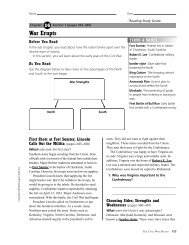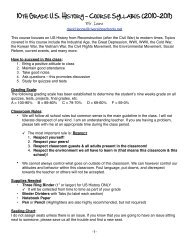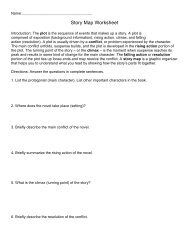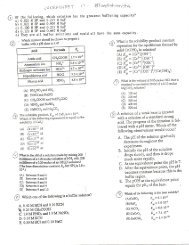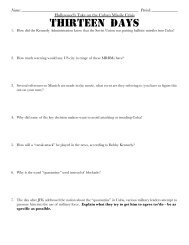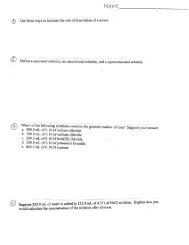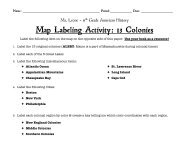Chapter 16 Text
Chapter 16 Text
Chapter 16 Text
Create successful ePaper yourself
Turn your PDF publications into a flip-book with our unique Google optimized e-Paper software.
and F atoms is much higher than it is for the other hydrogen halides, as shown<br />
Table 8.4. As a result HF is a weak acid, whereas all the other hydrogen halides<br />
are strong acids in water.<br />
A third factor that affects the ease with which a hydrogen atom ionizes from<br />
fJX is the stability of the conjugate base, X". In general, the greater the stability<br />
of the conjugate base, the stronger is the acid. The strength of an acid is often a<br />
combination of all three factors: the polarity of the H—Xbond, the strength of<br />
the H—X bond, and the stability of the conjugate base, X~.<br />
Binary Acids<br />
In general, the H—X bond strength is the most important factor determining<br />
acid strength among the binary acids (those containing hydrogen and just one<br />
other element) in which X is in the same group in the periodic table. The strength<br />
of an H—X bond tends to decrease as the element X increases in size. As a result,<br />
the bond strength decreases, and the acidity increases down a group. Thus, HC1<br />
is a stronger acid than HF, and H2S is a stronger acid than HjO.<br />
Bond strengths change less moving across a row in the periodic table than<br />
they do down a group. As a result, bond polarity is the major factor determining<br />
acidity for binary acids in the same row. Thus, acidity increases as the electronegativity<br />
of the element X increases, as it generally does moving from left to<br />
right in a row. For example, the acidity of the second-row elements varies in the<br />
following order: CH4 asic<br />
gan<br />
ands<br />
_<br />
-first<br />
Many common acids, such as sulfuric acid, contain one or more O—H bonds:<br />
TT (~i C f~\__ T-T<br />
" V " I<br />
jj<br />
Acids in which OH groups and possibly additional oxygen atoms are bound to<br />
a central atom are called oxyacids. The OH group is also present in bases. What<br />
factors determine whether an OH group will behave as a base or as an acid?<br />
•Period.2<br />
-•feriod'3';<br />
'.;( "•• •••":•"•' .'':" :



